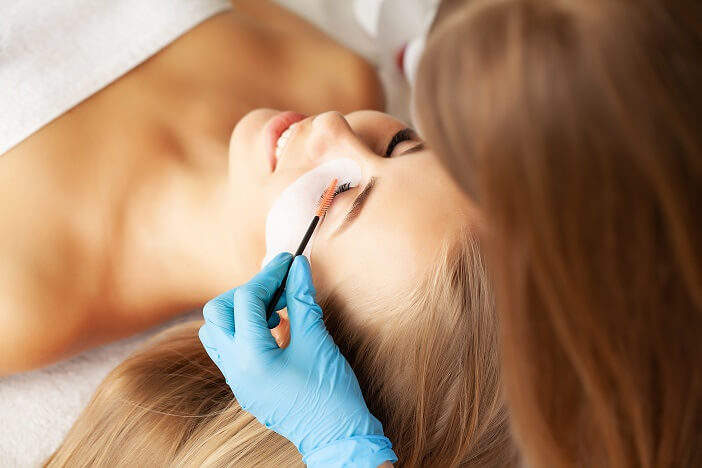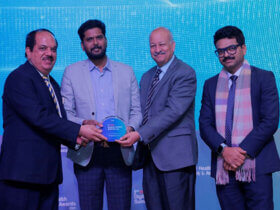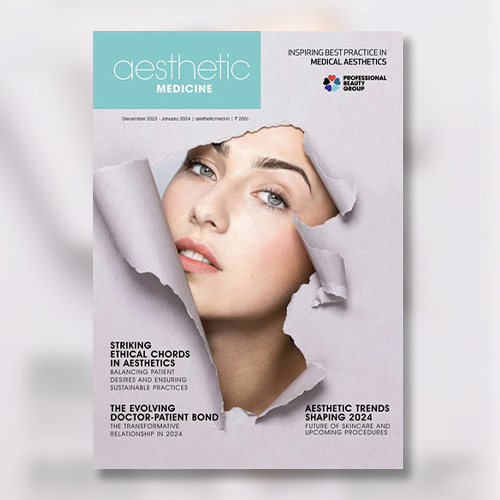Intro: Priya Chaphekar speaks to skin experts about what’s trending in cosmetic laser technology, the skin concerns it addresses and the scope for development.
At the pace at which the aesthetic dermatology market is growing – in terms of customer demand and developing technology – it is tantamount for dermatologists to be abreast with technical know-how. Devices are the support system of a good practice, and with non-invasive treatments gaining traction, dermatologists
are relying more and more on technology. While lasers have been around for decades, it is in itself a dynamic segment. We get experts to share their views on what’s trending in laser technology to encompass myriad demands for facial and body rejuvenation.
Get under the skin
Lasers continue to be at the forefront of a burgeoning dermatology practice, especially in metropolitan cities. According to Dr Shefali Trasi Nerurkar, MD Skin, Consultant Dermatologist, Dr Trasi’s Clinic & La Piel, lasers working at nano or even picoseconds wavelengths are trending for lipolysis, scar revision, skin lightening, tightening and hair removal. “A multitude of
skin concerns can be treated with laser devices – from basic dermatological conditions such as psoriasis, vitiligo, fungal infections, onychomycosis, skin tags, warts, rosacea and birth marks, to more advanced aesthetic and cosmetic concerns such as de-tanning, laser hair removal, skin brightening, treatment of acne or accident scars and tattoo removal,” she shares.
Dr Rinky Kapoor, Cosmetic Dermatologist and Dermatosurgeon, The Esthetic Clinics, lists hair growth induction, skin lightening, pigmentation correction, skin rejuvenation and anti-ageing, skin tightening, body shaping and body contouring, stretch mark reduction, scar removal, treatment of keloids and removal of skin growths and moles, among other treatments that can be done using laser technology.
“The trending laser technology includes EmSculpt, the latest body contouring treatment that perfectly pairs with CoolSculpting, which helps both fat reduction and muscle building. Ultherapy, on the other hand, is a non-invasive way to lift and tighten the brows, the area under the chin, the neck, and improve lines and wrinkles on the chest and décolletage with ultrasound technology. Fractional carbon dioxide and fractional radiofrequency or microneedle radiofrequency helps to treat different types of scars and rejuvenate the
skin. While picosecond lasers are used to treat pigmentation and tattoo removal, the triple wavelength laser technology aids painless hair removal,” explains Dr Kapoor.
India versus the West
“Barring a couple of procedures such as Cellfina, a non-surgical procedure that improves the appearance of cellulite, India is on par with the West in terms of using laser devices,” informs Dr Jaishree Sharad, Celebrity Dermatologist and Director at Skinfiniti Aesthetic Skin and Laser Clinic. The challenge, however, is that not all dermatologists invest in world-class technology. “Lasers are available in a range of prices, but only one percent of the dermatologists are fully equipped with the best technology,” points out Sumit Arora, Director, Ailen Aesthetics.
The road ahead
Dr Sharad emphasises on the need for more research to be done based on the Indian skin tone. “All the lasers have been studied on Caucasian or white skin, so the parameters are very different. When these lasers are sold in India, they have to be used in a particular way and by tweaking the parameters, first, because the Indian skin is different – it’s darker and has more melanin, and secondly, because of the tropical weather,” she says.
Although India is on par with the West, new technologies take some time to arrive in the Indian market. “Often a treatment modality has been trending for quite a few years before it is followed suit in India. This is because of the availability of the technology, permissions and regulations. Also, most active research in these fields is carried out in the West before the treatment modality is introduced everywhere,” highlights Shuba Dharmana, Founder, Lejeune Medspa Bangalore.
The shortcomings
However effective, a laser treatment should be safe to gain success. “Indian skin is darker and can encounter many problems. A good dermatologist should be extremely cautious by using low energy settings and following pre- and post-treatment protocols. Aggressive treatments must be avoided and he/she should invest in lasers from reputed brands,” says Dr Dharmana. Indian skin tends to tan easily, and can develop post inflammatory hyperpigmentation. “If care is not taken after a laser treatment, typically an ablative laser treatment. For instance, if a client uses a scrub or exposes himself/herself to the sun a week after the treatment, it might trigger the darkening of the skin, which might take more than six months to heal,” warns Dr Sharad.
The biggest shortcoming of a laser treatment, though, is the cost factor. “One session is never enough. It’s a minimum of one session every month or every six weeks. The number of sessions can range anywhere between six and ten or more, and the whole treatment can work out to be expensive as well as tedious,” adds Dr Sharad.
Technology going forward
Light-based energy systems generating LED therapies and lymphatic drainage seem to be everywhere. Blue light is typically used to treat acne prone skin and red light is used to treat conditions relating to anti-ageing.
- Cryolipolysis systems use sub zero temperatures to destroy fat and these are being combined with radiofrequency, lymphatic drainage or radial pulse technology to help with skin tightening.
- Pigment lasers with Q switch technology are using ultra low wavelengths to penetrate tissues better. Picosecond lasers are being used to break smaller pigment particles into minute particles.
- Laser hair removal technology remains the same with diode with or without the addition of other modalities, but while larger hand pieces facilitate a full body treatment quickly, hand piece tips help to reach areas that are smaller and more sensitive, such as the under eye area.
- Focused ultrasound energy system allows the dermatologist to visualise tissue planes while delivering energy. It is being used not only for non-surgical face lifting, but also in the areas that need toning and lifting – like the neck, décolletage, knees, inner arms, thigh, and abdomen.









Leave a Reply